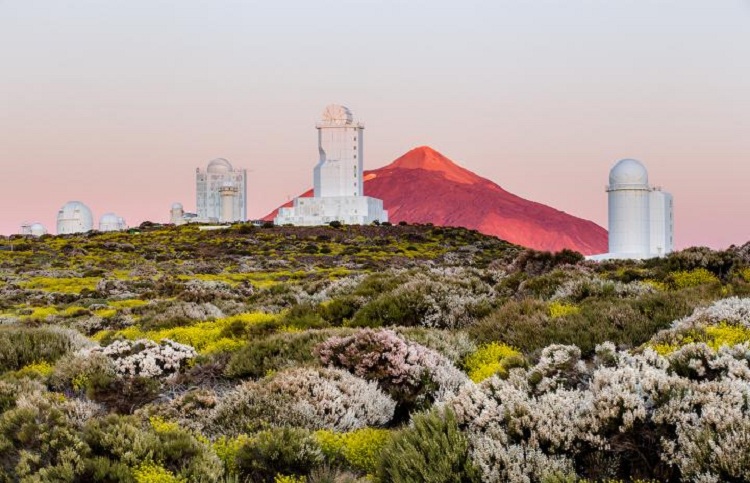The Diplomat
The Instituto de Astrofísica de Canarias (IAC) has reached an agreement with its Italian counterpart, the Istituto Nazionale di Astrofisica (INAF), for the location at the Teide Observatory of a telescope project that will be entirely financed by Italy and which will represent the most advanced astrophysical installation at this Canary Islands centre in the last thirty years.
The agreement, which was signed on 22 December last in San Cristóbal de la Laguna (Santa Cruz de Tenerife) by the scientific heads of both institutes (Giovanni Pareschi, for INAF, and Ramón García López, for the IAC), came into force on 7 January and was published last Friday in the Official State Gazette (BOE).
The purpose of the ASTRI project is to set up a network of between nine and twelve Cherenkov-type telescopes to study the universe in gamma rays using a technique for capturing atmospheric images with an energy range that has been practically unexplored to date. In addition, this facility will make it possible to observe the internal structure of the Teide volcano, which could provide new clues to its future evolution, according to the astrophysical centre.
Spain opened the Canary Islands Observatories to the international scientific community in 1979 with the signing of the international treaty Agreement on Cooperation in Astrophysics and its Protocol, to which Italy acceded in 1992. Under this treaty, Italy requested the IAC in 2019 to install the ASTRI telescopes at the Teide Observatory, which is considered an ideal site for this type of facility due to its internationally recognised quality, its low precipitable water vapour, the number of clear nights and its geographical location with respect to the northern hemisphere sky.
The operation of the ASTRIs is expected to start in early 2021 and continue for an initial period of four years, which could be extended by mutual agreement for a further four years. After the second period, any further extension will require the signature of a new agreement.
According to the IAC, the project will be “fully funded by Italy”. Specifically, for the duration of the agreement and its possible extensions, INAF will make a financial contribution to the IAC of 50,000 euros per year to finance the salary cost of each postdoctoral position and a further 27,000 euros per year for the salary cost of each PhD student. This includes the payment of 7,700 euros per year for the first telescope and a further 7,700 euros per year for each subsequent telescope, bringing the total financial obligation for this item to 69,300 euros per year once all nine telescopes have been installed. As for electricity consumption, INAF will have to pay an amount of approximately another 7,500 euros per year for each telescope.







